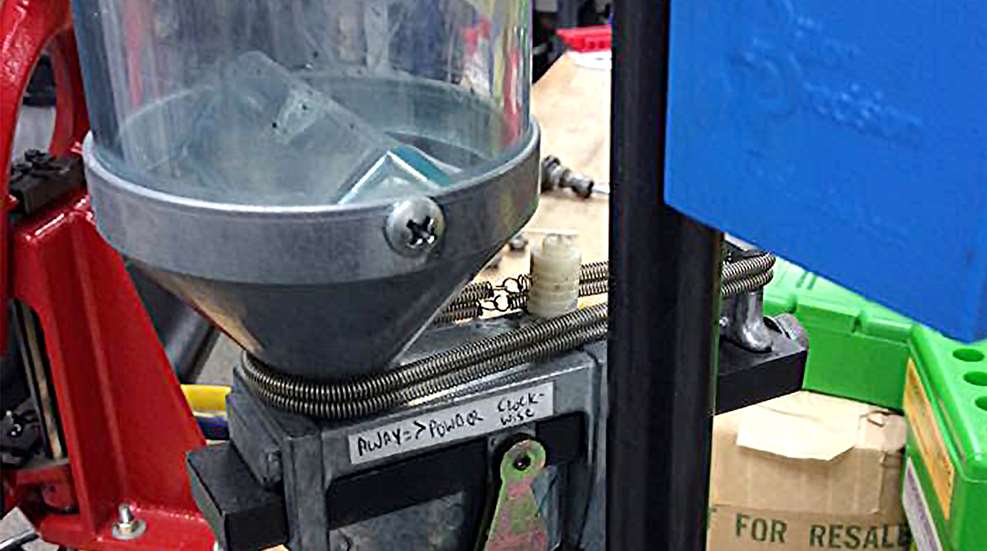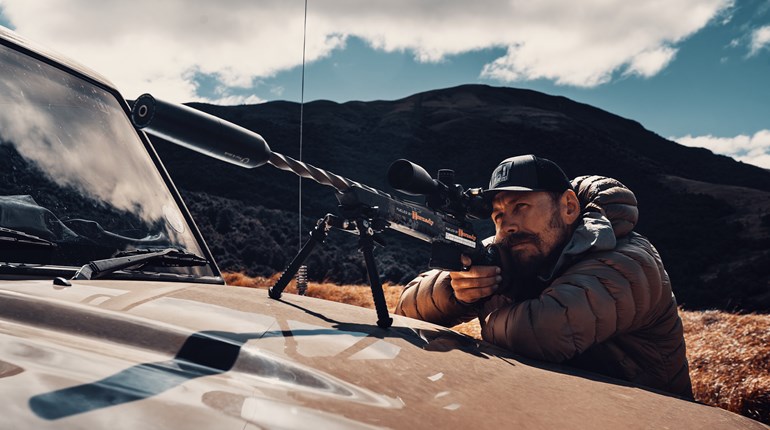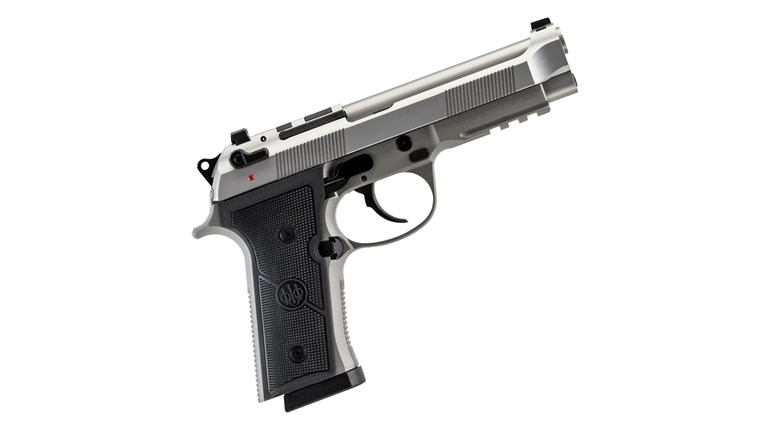
WARNING: All technical data in this publication, especially for handloading, reflect the limited experience of individuals using specific tools, products, equipment and components under specific conditions and circumstances not necessarily reported in the article and over which the National Rifle Association (NRA) has no control. The data has not otherwise been tested or verified by the NRA. The NRA, its agents, officers and employees accept no responsibility for the results obtained by persons using such data and disclaim all liability for any consequential injuries or damages.
Previously, we gave some tips on correcting some unusual quirks of progressive presses such as uniformity of sized case headspace, primer seating depth and powder charge settings. In this article, we’ll delve deeper into methods of minimizing powder charge-to-charge variation.
CAVEAT: While our handloading shop has many progressive presses, ALL of our powder charges are thrown and weighed by hand. We do not use powder measures on our presses. Our progressives are used for brass preparation, priming, seating, etc., but not for fully-progressive loading.
As experienced handloaders know, several variables affect the uniformity of metered powder charges (i.e., those thrown directly from a powder measure.) A small variation is tolerable for all but the most demanding tasks. However, rifle competitors—in particular, those competing at 600 yards and beyond—will be happiest when charges are as uniform as possible.
Some common factors affecting powder charge uniformity from a measure include, but are not limited to:
1) The type of powder used—ball/spherical, extruded (including long-grain vs. short-grain versions), and flake versions.
2) The type of measure used—quality of machining, presence/absence of reservoir baffles, cleanliness (and thus smoothness of operation) and sturdiness of mounting, among others.
3) The operator: smoothness and above all, UNIFORMITY of operating the powder measure.
In addition, some progressive presses may induce additional variables not encountered by the single-stage handloader.
Of course, when one’s load parameters permit, using a powder that meters evenly can greatly improve charge uniformity. For example, when metering a fine-grain spherical powder for a loading tray of 50 rounds—by actual count—this writer only encountered two that were 0.1 grain over or under the desired charge.
All 50 charges were check-weighed before funneling them into cases. Not all ball/spherical powders are this uniform, but as a species, they often contrast nicely to extruded powders. However, many extruded powders offer outstanding performance, particularly at long range.
A particular long-grain extruded powder meters only about 25 out of 50 charges “correct” to 0.1 grain from the author’s measure, while a different short-grain extruded powder from the same measure will yield about 35/50 correct. Of course, an operator who has not yet developed a consistent technique may increase variation. Flake powders tend to be fast-burning and most often used in pistol, cast bullet or reduced loads. Thus, they are very frequently metered, not weighed.
In the author’s experience, many flake powders are difficult to meter precisely, even from top-quality measures. Hence, he once weighed 2000 .45 ACP match powder charges to 0.1 grain for use by a champion-level AMU Pistol Team member at 50 yards. The shooter reportedly remarked, “It feels like I’m cheating! I haven’t shot a nine yet!” i.e. in several hundred rounds of training.
Note that this was an extreme case, for an especially-gifted shooter’s use in 50-yard National-level competition/practice only. Most pistol shooters are well-served by properly-metered charges. Naturally, the labor required to weigh and correct this many charges is tedious and extensive! Whenever a ball/spherical pistol powder can give results equal to, or better than a flake powder, their use can significantly reduce charge variation.
Read the next article in this handloading series Progressive Presses: Optimum Powder Metering Tips.
SSUSA thanks the U.S. Army Marksmanship Unit for allowing the reprint of this article.


































